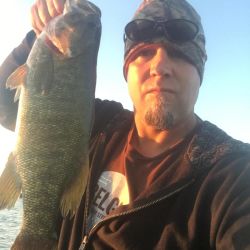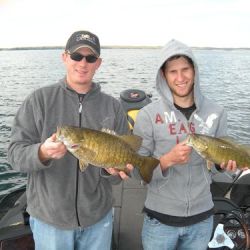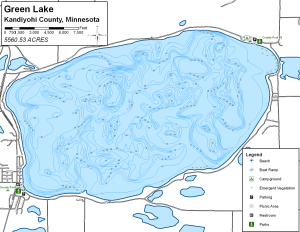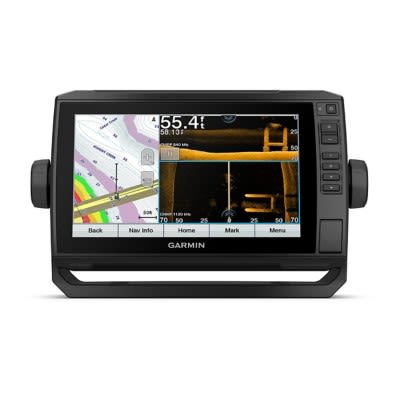Today's Best Fishing Times
Get the best fishing times for Green Lake with Lake-Link's Fishing Forecast. SEE MORE
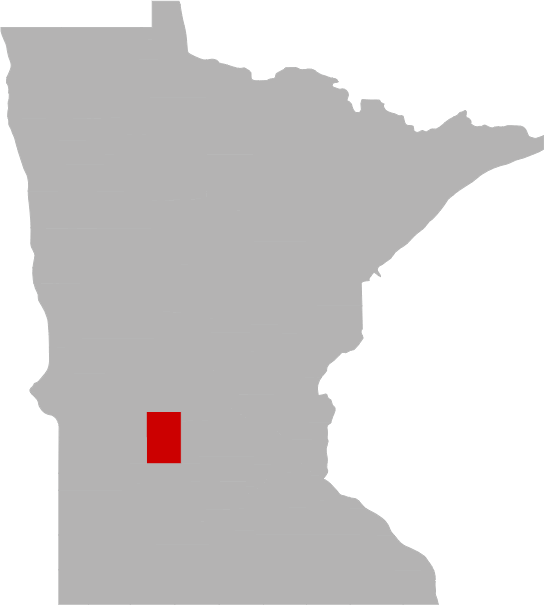
The lake has a maximum depth of 110 feet and an average depth of 21 feet. It is surrounded by forests and rolling hills, which provide a picturesque backdrop for water-based activities such as boating, fishing, and swimming. The lake is home to a variety of fish species, including walleye, northern pike, bass, and panfish, which are popular targets for anglers.
Green Lake is also an important ecological resource, providing habitat for a variety of plant and animal species. The lake is managed by the Minnesota Department of Natural Resources to protect and conserve the area's natural resources.
In addition to its natural beauty and recreational opportunities, Green Lake is surrounded by several parks, campgrounds, and resorts, making it a popular vacation destination. The area also offers hiking and biking trails, hunting opportunities, and other outdoor activities for visitors to enjoy.

Share Your Catch & Win!
Frequently Asked Questions About Green Lake, MN
- How big is Green Lake?
- How deep is Green Lake?
- What kind of fish can you catch in Green Lake?
- What are the closest cities to Green Lake?
- Are there places to stay in the Green Lake area?
- Are there topographical lake maps available Green Lake?
- Are there boat launches on Green Lake?
- Are there places to eat and drink near Green Lake?
- What are the fishing regulations for Green Lake?
- What is the average air temp for Green Lake?
- Are there any state parks near Green Lake?
How big is Green Lake?
How deep is Green Lake?
What kind of fish can you catch in Green Lake?
Other fish species in the lake include Banded Killifish, Blackchin Shiner, Bluntnose Minnow, Brook Silverside, Brook Stickleback, Cisco (Tullibee), Common Shiner, Fathead Minnow, Golden Shiner, Green Sunfish, Hybrid Sunfish, Iowa Darter, Johnny Darter, Logperch, Longnose Dace, Orangespotted Sunfish, Pugnose Shiner, Shorthead Redhorse, Spottail Shiner, Tadpole Madtom, Trout-Perch and White Sucker.
What are the closest cities to Green Lake?
Are there places to stay in the Green Lake area?
More Lodging Options
Are there topographical lake maps available Green Lake?
Are there boat launches on Green Lake?
Are there places to eat and drink near Green Lake?
What are the fishing regulations for Green Lake?
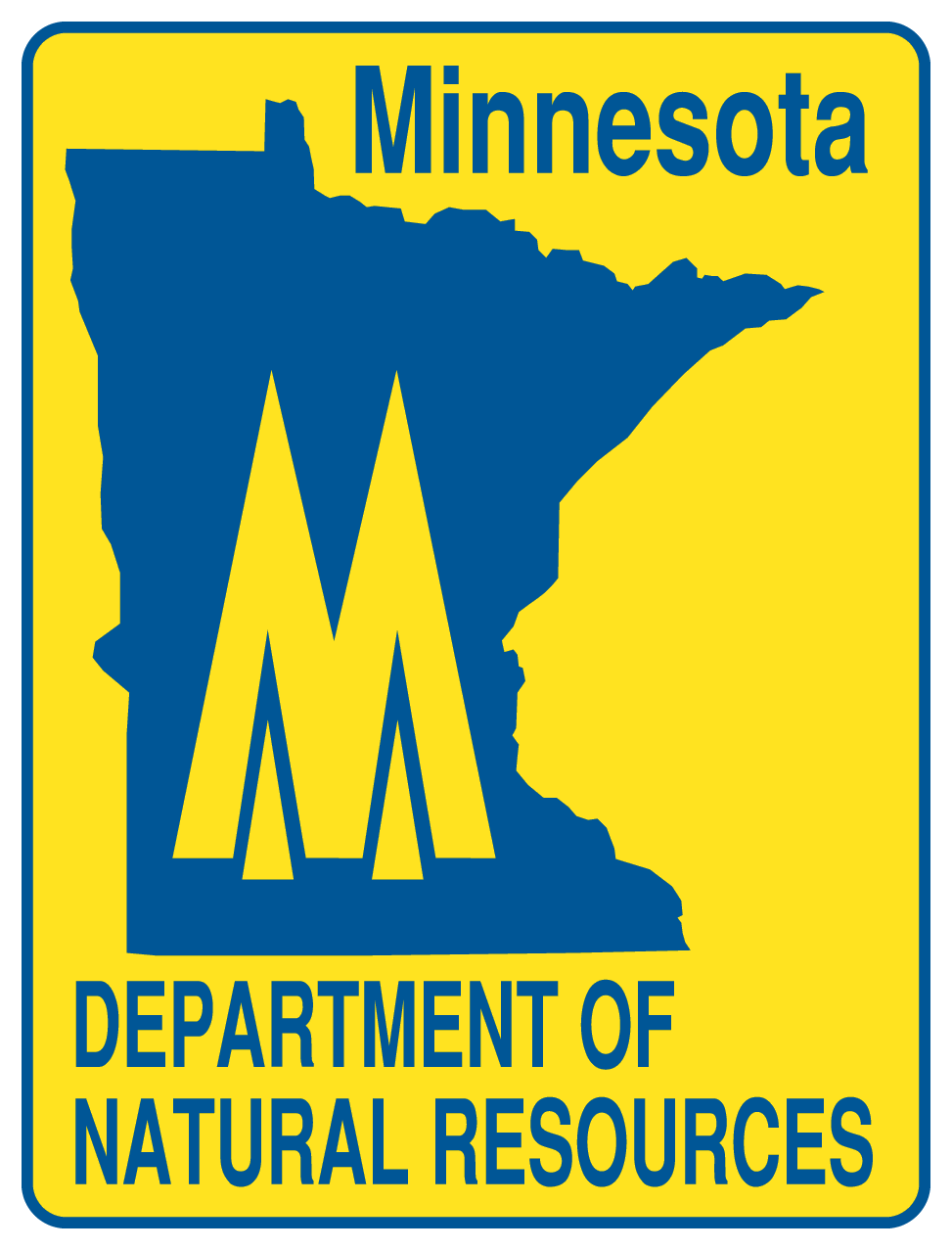 There are specific fishing regulations Green Lake that you need to know. For complete fishing regulations visit the Minnesota Department of Natural Resources. To report a violation call (800) 652-9093. Need a Minnesota fishing license?
There are specific fishing regulations Green Lake that you need to know. For complete fishing regulations visit the Minnesota Department of Natural Resources. To report a violation call (800) 652-9093. Need a Minnesota fishing license?
Explore the Green Lake area in a RV
Are you looking for an adventurous vacation option that won't break the bank? Look no further than renting an RV! Contrary to popular belief, the process is much simpler than you might imagine. With just a few easy steps, you'll soon be experiencing the ultimate freedom and convenience of exploring the open road in your very own recreational vehicle. And the best part? RV travel can save you up to 60% compared to other types of vacations! With the money you'll save, you'll be able to travel even more and create unforgettable memories along the way. So why wait? Start planning your next adventure today with an RV rental. Learn more about renting a RV.
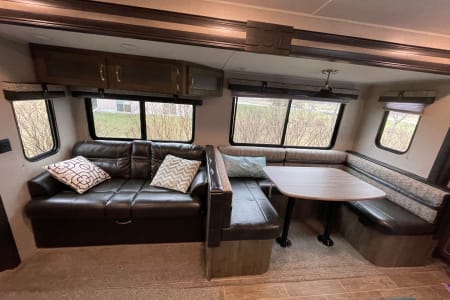
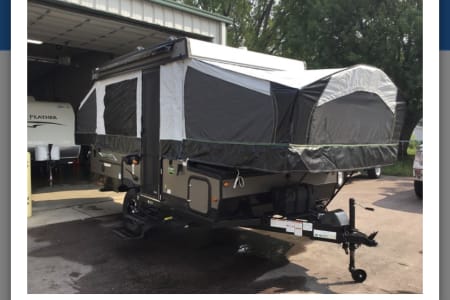


What aquatic invasive species are found in Green Lake?
Join us in the fight to prevent the spread of invasive species These sneaky creatures can hitch a ride on boats, clinging onto propellers, anchor lines, and trailers. They can even survive in hidden places like bilge water and ballast tanks, or disguise themselves in dirt and sand that sticks to nets, buckets, anchors, and waders. But don't worry, we have the power to stop them in their tracks with just a few simple steps. So let's do our part and protect our waters from these unwanted invaders.
History & Status of the Fishery
A standard survey of Green Lake was conducted during early August of 2016. A fall electrofishing survey was conducted on September 28, 2016 to evaluate young of year "YOY" (fingerling sized) Walleye abundance in Green Lake. A creel survey was conducted on Green Lake during 2015. Green is a large (5,561 acres), deep (110 feet maximum), highly developed (690 homes) and moderately productive lake located in Kandiyohi County. Green is a popular fishery for Walleye, Northern Pike, Smallmouth Bass, Black Crappie (recent years) and Bluegill. There are approximately 48 inlets that enter Green Lake. The Middle Fork Crow River is the largest inlet and enters Green along the north shore and exits along the east side eventually flowing into Calhoun Lake. Direct nutrient runoff into Green is primarily from highway runoff and residential sources, which include lake homes and the city of Spicer. There is also upstream agricultural row crop runoff that enters into the Middle Fork Crow River. Water levels were high during the summer and fall of 2016 due to frequent rainfall events. Water clarity was excellent (12.7 feet) for Green Lake on July 28, 2016. A broad band (3-36 feet) of ideal temperatures (<74 degrees Fahrenheit "F") and dissolved oxygen levels (>3 ppm) for Tullibee were present in Green during late summers for 2013-2015. There was adequate dissolved oxygen (>3 ppm) and temperature conditions (<74 F) for Tullibee at depths of 27-35 feet during the August 2015 survey and 40-60 feet during the 2016 survey. The most frequently observed submergent and algal vegetation species or groups included Chara, Stonewort, Eurasian Watermilfoil, River Pondweed, Water Moss, Clasping-leaf Pondweed, Sago Pondweed and Curly-leaf Pondweed. Emergent vegetation such as Hardstem Bulrush is abundant in the outlet bay. A moderate stand of bulrush is also present along the southeast shore. Shoalwater substrates are mostly sand, rubble, gravel and boulder. Recent ice on dates were December 10, 2016 and December 27, 2015. Snow and mild temperatures resulted in poor conditions (<6 inches of ice), thus limiting access on Green and many other local lakes during December of 2016. Recent ice off dates were March 21, 2017 and March 22, 2016 which were the second and third earliest occurrences for Green Lake.
Climate change effects have been noticeable for both habitat and species density changes in Green Lake during recent decades. Periphyton (algae, diatoms) and dead plant material now cover the boulder/rubble substrates generally all year long with the exception of some narrow (<1 foot deep) windswept near shore areas. This has favored warm water species (Black Crappie, Largemouth Bass, Bluegill, Rock Bass) which are nest spawners, unlike broadcast spawners such Walleye and Tullibee "Cisco". In addition, increased densities of submergent vegetation such as invasive Eurasian Watermilfoil (first documented in 2000) have provided added habitat/cover for all fish species.
The threats of present (Zebra Mussels, Eurasian Watermilfoil, and Curly-leaf Pondweed) and potential exotic invasive species introductions (i.e. Starry Stonewort, Quagga Mussels, Spiny Water Flea, Faucet Snail, etc.) are of a major concern to local residents in Kandiyohi County. One adult Zebra Mussel was found on a dock along the southeast shore of Green during the early summer of 2014. No additional Zebra Mussels were found until the fall of 2014. Numerous small young Zebra Mussels were found attached on docks and boat lifts scattered throughout Green Lake in 2015. Eradication of Zebra Mussels is improbable once Mussels spread throughout a lake due to their ability to reproduce large numbers of young Zebra Mussel "veligers" by a small number of adults. Green Lake will continue to be monitored to document impacts Zebra Mussels may have on the lake ecology (i.e. water clarity, substrate effects, aquatic vegetation, plankton abundance, native species responses, etc.). Water clarity and occasional late summer blue-green algae bloom events are also expected to increase in the future due to the potential effects of the recent Zebra Mussel infestation in Green.
Bluegill numbers were moderate in 2016 (23.53 fish/trapnet) compared to the normal range for similar lakes, but below the historical average (45.39 fish/trapnet). Bluegill average size was large (0.28 pounds and 7.0 inches) from trapnets. The Bluegill historical average weight is 0.14 pounds from trapnets. There were abundant numbers of Bluegill (20.92 fish/trapnet) 6.0 inches and larger in the trapnets.
Black Crappie numbers were moderate in 2016 (0.92 fish/gillnet, 1.07 fish/trapnet) compared to the historical averages (1.26 fish/gillnet and 0.77 fish/trapnet). Black Crappie average sizes were moderate from gillnets (0.57 pounds and 9.3 inches), but slightly smaller from trapnets (0.37 pounds and 8.0 inches). Black Crappie growth rates were excellent.
Northern Pike numbers were low in 2016 (2.33 fish/gillnet) compared to the normal range for similar lakes and the historical average (2.71 fish/gillnet). Northern Pike average size was moderate (2.89 pounds and 23.4 inches) from gillnets. The Northern Pike historical average weight and length are 3.17 pounds and 23.4 inches from gillnets. Northern Pike have been generally lean in appearance compared to fish captured in the assessments prior to 2003. Low numbers of forage fish (Yellow Perch and Tullibee) have been documented in Green Lake surveys from 2003-2016. Northern Pike growth rates were poor for ages 1-3, but moderate for ages 4-7. The 2013 year class comprised 39% of the 2016 Northern Pike catch.
Smallmouth Bass numbers were low in 2016 (1.08 fish/gillnet) compared to the historical average (1.82 fish/gillnet). Smallmouth Bass average size was large (2.16 pounds and 15.6 inches) from gillnets. The Smallmouth Bass historical average weight and length are 1.55 pounds and 13.4 inches from gillnets for Green Lake. Smallmouth Bass condition factors have been generally poor since 2001. Smallmouth Bass growth rates were poor for ages 1-7. Crayfish, an important Smallmouth Bass forage species, have been present in low numbers since 1999. Crayfish numbers may increase in the future due to a new forage species "Zebra Mussel" present in Green. In response, this may also provide a greater forage base "crayfish" for Smallmouth Bass. The 2010 and 2011 year classes each comprised 29% of the 2016 Smallmouth Bass gillnet catch.
Tullibee numbers were low in the 2016 summer survey (0.17 fish/gillnet) compared to the historical average (2.06 fish/gillnet). The 2016 summer Tullibee average size was small (0.42 pounds and 10.8) inches from gillnets. The Tullibee historical summer average weight is 0.60 pounds from gillnets. The 2012 Tullibee year class comprised 100% of the 2016 Tullibee summer survey catch. Tullibee numbers were also low (10.33 fish/gillnet, 13.7 inches average) in the 2015 fall assessment. The inconsistency of Tullibee natural reproduction and inadequate adult Tullibee numbers on the spawning grounds as sampled by the DNR is not a good indication for the long term sustainability of the Tullibee populations in Green.
Yellow Perch numbers were low in 2016 (0.67 fish/gillnet) compared to the normal range for similar lakes and the historical average (12.73 fish/gillnet). Local anglers have reported seeing numerous small Yellow Perch amongst the chara beds with cameras during the summer or while spearing in the winter. Our standard gillnets may not effectively sample these small (<5.0 inches) Yellow Perch. Predation pressures from various species (i.e. Rock Bass, Largemouth Bass, Walleye, etc.) may have also selected for smaller sized and earlier reproducing Yellow Perch restricted to near bottom cover consisting of dense chara beds in Green. Yellow Perch average size was moderate to small (0.11 pounds and 6.6 inches) from gillnets.
Walleye numbers were low in 2016 (5.33 fish/gillnet) compared to the historical average (8.82 fish/gillnet) for Green Lake. The 2016 Walleye average size was moderate (1.21 pounds and 14.8 inches) from gillnets. The Walleye historical average weight and length are 1.26 pounds and 14.7 inches from gillnets. Walleye condition factors were poor in 2016. Growth rates were also poor compared to other Spicer Area lakes, but variable by age compared to Green Lake historical values. Recent Walleye year classes have been due mostly to stocking since 2001. The 2016 walleye survey catch was comprised primarily of 2011 (19%), 2012 (19%), 2013 (32%) and 2014 (19%) year classes. The 2011 Walleye year class was successful in many area lakes.
Green Lake was stocked annually with Walleye fry (1-4 million) from 2000-2013 except for 2002. OTC marked Walleye fry (1-2 million) were stocked in Green each year during 2000-2001, 2007-2013 and 2016. No Walleye fry were stocked in 2014 or 2015 due to the cessation of egg take operations on Green Lake. Walleye fry stocked during previous years were mostly part of a 10% return of Walleye eggs taken for the statewide propagation program. Walleye unmarked Spicer strain fingerlings and yearlings (18,413 fish, 1,784 pounds) were stocked into Green during the 2016 fall. Various combinations of Walleye fingerlings, yearlings, or adults have been stocked annually (2,000-4,000 pounds/year) since 2000 into Green Lake.
No YOY Walleye were captured during the 2016 or 2015 fall electrofishing surveys. Low YOY Walleye numbers were captured in the 2014 (4.0 YOY/hour, 7.6 inches average length) and 2013 (5.0 YOY/hour, 6.40 inches average length) fall electrofishing surveys. OTC marked fry captured as fingerlings comprised 40% of the 2013 and 55% (=6.6 YOY/hour) of the 2012 fall electrofishing surveys. Moderate numbers of YOY Walleye were captured in a previous 2011 fall electrofishing survey (31.0 YOY/hour, 6.5 inches average length). OTC marked YOY Walleye (fry stocked) comprised 63% (=19.6 YOY/hour) of the 2011 fall YOY Walleye survey catch. The Green Lake fall electrofishing historical average YOY Walleye catch rate and length are 12.3 YOY/hour and 6.8 inches. The highest fall electrofishing catch rate of YOY Walleye for Green occurred in 1994 (54.0 YOY/hour, 6.2 inches average size). Yearling Walleye numbers were moderate to low in the 2014 (6.0 fish/hour) and 2016 (3.0 fish/hour) fall surveys. No yearling Walleye were captured in the 2015 fall electrofishing survey.
Rock Bass numbers were abundant in 2016 (13.08 fish/gillnet) compared to the normal range of similar lakes. It was the highest recorded value for Green Lake. The Rock Bass historical average catch rate is 8.59 fish/gillnet for Green Lake. The 2016 Rock Bass average size was moderate (0.41 pounds and 7.8 inches from gillnets.
Largemouth Bass numbers were abundant in 2016 (1.17 fish/gillnet) compared to the normal range for similar lakes and the historical average (0.79 fish/gillnet). Largemouth Bass average size was moderate (0.72 pounds and 10.5 inches) from gillnets. The Largemouth Bass historical average weight is 0.69 pounds from gillnets. Largemouth Bass growth rates were poor for ages 1-5, but moderate for older fish.
Other species captured included low numbers of White Sucker (0.50 fish/gillnet), Common Carp (0.27 fish/trapnet), Pumpkinseed (0.07 fish/trapnet), Hybrid Sunfish (1.40 fish/trapnet) and Black Bullhead (0.17 fish/gillnet). Moderate numbers of large Yellow Bullhead were captured in 2016 (3.00 fish/gillnet, 1.01 pounds average weight).
An Index of Biotic Integrity "IBI" survey was conducted from August 2-3, 2016 on Green Lake. One measure of a lake's health is the community of fish, plants and aquatic life it sustains. Certain species can't survive without clean water and a healthy habitat while other species are tolerant of degraded conditions. Examples of fish that require clean water are Tullibee, Rock Bass, and Bluegill. Species that are tolerant to degraded habitat are Black Bullhead, Common Carp, and Green Sunfish. The more intolerant fish to degraded habitat you have in the sample, the higher the score will be. An index of biological integrity (IBI) is a score that compares the types and numbers of fish or plants observed in a lake to what is expected for a healthy lake.
Seine hauls were conducted at 24 IBI stations with a bag seine of 50 foot width and 1/8 inch bar mesh in depths of 3.5 feet or less. Near shore electrofishing was conducted at 23 of 24 IBI Stations with a back-pack unit in water depths generally less than 2 feet deep. One electrofishing station was not sampled due to windy conditions. The 24 IBI Stations were spaced equally apart around the entire shoreline of the lake in a variety of near shore habitats. Each station was approximately 100 feet long. Two back-pack electrofishing runs were conducted with the initial run of 100 feet near the shore-water interface in depths of < 1 foot and the second run of 100 feet long about 10-20 feet from shore in depths up to 2 feet.
Approximately 21 different fish species (14 species from back-pack electrofishing, 19 species from seining) were captured from electrofishing and seining combined. Fish species captured included gamefish (i.e. Smallmouth Bass and Largemouth Bass), panfish (Bluegill, Yellow Perch, Pumpkinseed, Rock Bass, Green Sunfish, and Hybrid Sunfish), large non-gamefish (Yellow Bullhead) and small non-gamefish (Iowa Darter, Johnny Darter, Brook Silverside, Blacknose Shiner, Banded Killifish, Golden Shiner, Logperch, Longnose Dace, Spotfin Shiner, Spottail Shiner, Bluntnose Minnow and Tadpole Madtom). Young of year species captured included Brook Silverside, Largemouth Bass and Smallmouth Bass in seine hauls. Rock Bass and Yellow Bullhead were only captured by electrofishing. The various species captured in Green is indicative of species present in most riverine connected Spicer Area lakes.
Current fish management activities on Green Lake include monitoring the fish population on an annual basis, assisting aquatic plant management and enforcement personnel with invasive species monitoring and education, protecting native aquatic vegetation through the permit process, participating in local watershed initiatives to maintain or improve water quality, and stocking Walleye to meet long-range goals. The Green Lake fishery will be sampled in the fall of 2017 for YOY Walleye abundance, and the summer of 2017 for all fish species by standard survey nets.
What is the average air temp for Green Lake?
Are there any state parks near Green Lake?
For more Minnesota State Park information see our State Park Guide.
Green Lake Reviews
Below is the word on street about Green Lake.Have you been to Green Lake? Why not share your personal reveiw with others?
Submit Review
rhonda

More Nearby Lakes To Explore
There's more lake's to explore around Green Lake...| DISTANCE | ACRES | MAX DEPTH | |
| Nest Lake | 2.8 mi | 1,008 | 40 ft |
| Elkhorn Lake | 3.4 mi | 79 | 41 ft |
| Calhoun Lake | 3.8 mi | 647 | 13 ft |
| Bass Lake | 3.8 mi | 50 | 31 ft |
| George Lake | 3.9 mi | 228 | 34 ft |
| Henderson Lake | 4.6 mi | 75 | 57 ft |
| Lake Monongalia | 5.1 mi | 2,271 | 14 ft |
| Long Lake | 5.4 mi | 325 | 46 ft |
| Ringo Lake | 5.6 mi | 735 | 10 ft |
| Diamond Lake | 5.6 mi | 1,607 | 27 ft |


 (1)
(1)